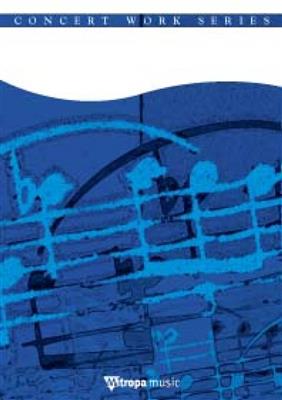Results
-
 £139.99
£139.99Green Hills Fantasy - Thomas Doss
This composition describes a landscape in the Upper Austrian region of Mhlviertel. This area was once besieged by the Celts, who spread fear and terror among the inhabitants, however the people opposed the enemy with patience and courage. Theiruncompromising love of life demonstrated how unyielding they were and finally, the Celts had to withdraw from Mhlviertel. The region is still one of the most beautiful landscapes in Austria, and the people who live there are proof that tradition andprogress are not necessarily contradictory. Green Hills Fantasy gives you a chance to hear this fantastic landscape immortalized in a wonderful piece for Concert Band.
Estimated dispatch 7-14 working days
-
 £139.99
£139.99Traffic - Thomas Doss
This piece describes the daily madness of traffic in a city full of cars, noise and exhaust fumes. Even in the countryside the 'monster on four wheels' has already arrived and is destroying idyllic villages. In the middle of the composition, we experience a traffic jam, where some drivers tend to behave in a very primitive way! This work is dedicated to all those who are affected by or are suffering from the overpowering proliferation of traffic. This work will 'drive' your audiences crazy with excitement !!
Estimated dispatch 7-14 working days
-
 £109.99
£109.99Musica Eroica - Thomas Doss
Composed for the occasion of the 750th anniversary of the city of Bruneck (Brunico), South Tyrol, Italy, Musica Eroica reminds the listener of the days of knights and heroes. The introduction is heroic in character, launching a hymn that is gradually taken over by the band. The cheerful atmosphere of this composition symbolizes the beauty of South Tyrol and the hospitality of the city of Bruneck, a place where one can feel at home. Now your band can also feel at home with this wonderful work for Concert Band.
Estimated dispatch 7-14 working days
-
 £104.99
£104.99The Spirit of Youth - Thomas Doss
Europe`s broad cultural heritage is a valuable possession that should be protected.We stand before the enormous challenge of creating a unity of East and West while at the same time maintaining the long established cultural diversity. After all, the wealth of Europe lies within its variety of traditions - this is what the future should be built upon. This hymn, written within the context of the Austrian EU Presidency 2006, is dedicated to all of Europes young people and will add a wonderfully uplifting feel to any performance.
Estimated dispatch 7-14 working days
-
 £104.99
£104.99Trumpets and Bridges - Thomas Doss
Trumpets and Bridges was composed to celebrate the opening ofa new bridge linking Austria with Germany. This bridge is a symbolfor the meeting of cultures and the lifting of borders. In the thirdmillennium, geographical and political borders are losing theirmeaning and often they cause senseless suffering. Music is the bestevidence against the necessity of borders. Music is more global andinternational than any other language, because it is understood inthe heart, where no boundaries exist.
Estimated dispatch 7-14 working days
-
£248.99
-
 £104.99
£104.99Triumphal Prelude - Thomas Doss
This work was commissioned by the Musikkapelle Heiden, Germany, on the occasion of the centenary of this versatile and energetic music society. Triumphal Prelude begins with fireworks of sounds and fanfares, which are worthy of a centennial. It is therefore an ideal opening work. Undoubtedly, the sparkling music will enthrall the audience, thanks to the dazzling sound of the Brass players - who can be heard above the radiant performance of the Woodwind players.
Estimated dispatch 7-14 working days
-
 £109.99
£109.99Black River Overture - Thomas Doss
The Black River Overture was commissioned by the music society Pfarrkapelle Schwarzenbach, on the occasion of its 50th anniversary. Schwarzenbach literally means "black brook" - hence the title of the work. This light-hearted piece is a compliment to all music societies and wind bands that have continued despite alternative, modern leisure-time activities in villages; as such, they are able to offer a wonderful and meaningful occupation to both the young and young-at-heart: namely, making music! These societies are the basis for all cultural work, making life rich and colourful.
Estimated dispatch 7-14 working days
-
 £154.99
£154.99Of Castles and Legends - Thomas Doss
The programmatic composition Of Castles and Legends is basedon the German legend of the white maiden who lived in the smallcity of Volkmarsen. It tells the tale of invading evil knights whokidnap a beautiful maiden, who through sheer panic commandedher spirit into the hands of God and by jumping into the abyss fromthe highest tower of the castle where she was being held. Fromthat day onward, she appeared from time to time, in shiny whitegarments, a sign of eternal heavenly joy. A fantastically descriptivepiece which portrays this tragic legend through the power of music.
Estimated dispatch 7-14 working days
-
£154.99
Sirna - Thomas Doss
Estimated dispatch 7-14 working days
